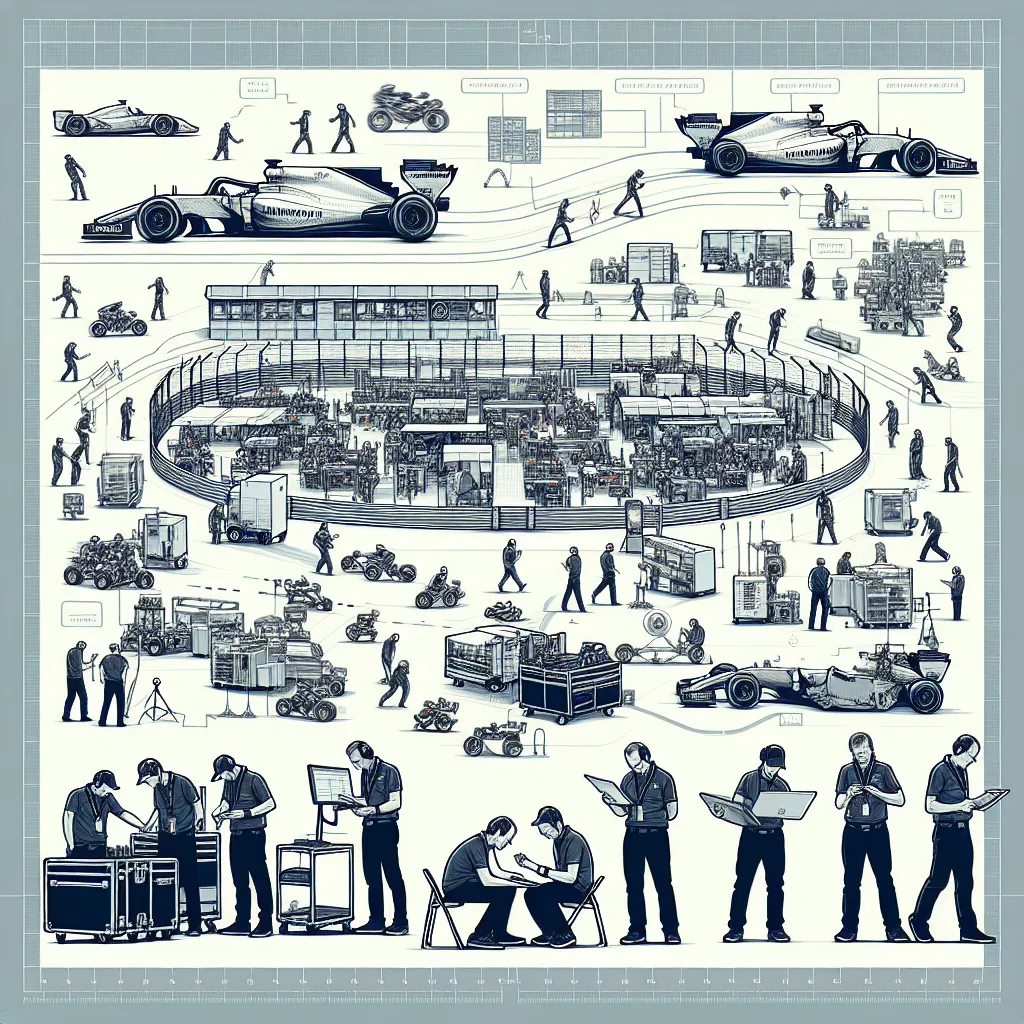The Logistics of Planning a Racing Event
When it comes to organizing a successful racing event, one of the most crucial aspects to consider is the logistics of planning. The logistics of a racing event encompass a wide range of details, including venue selection, track setup, transportation, accommodations, and safety measures.
First and foremost, selecting the right venue is essential for the success of the event. The venue needs to have sufficient space for the track, spectator areas, parking, and facilities for participants. Additionally, the track setup itself requires careful planning to ensure it meets all safety standards and provides a thrilling experience for both drivers and spectators.
Transportation logistics are also a key consideration. This involves arranging for the smooth arrival and departure of participants, staff, and attendees. Coordinating parking areas and shuttle services can significantly impact the overall experience of the event.
Accommodations for participants and staff, as well as hospitality services for sponsors and VIP guests, fall under the logistics umbrella as well. Ensuring that everyone involved has suitable lodging and facilities is essential for a well-organized and smooth-running event.
Finally, the logistics of planning a racing event must prioritize safety measures. This includes emergency medical services, security personnel, and adherence to all regulations and safety protocols. Prioritizing safety not only protects participants and attendees but also enhances the professionalism and reputation of the event.
In conclusion, the logistics of planning a racing event are multifaceted and require meticulous attention to detail. By carefully addressing venue selection, track setup, transportation, accommodations, and safety measures, event organizers can ensure a successful and memorable experience for all involved.
Team Coordination and Setup Preparation
Team coordination and setup preparation are critical aspects of organizing a successful racing event. A well-coordinated team is essential to ensure that all elements of the event run smoothly and efficiently. From the logistics team managing the transportation of vehicles and equipment to the technical crew setting up the track and pit areas, every member plays a crucial role in the overall success of the event.
Prior to the event, it is imperative to establish clear lines of communication and designated roles for each team member. This helps to prevent any confusion or overlapping responsibilities, ensuring that everyone knows their tasks and responsibilities. Regular team meetings and briefings are essential for keeping everyone informed and aligned with the event’s objectives.
In addition to team coordination, setup preparation is another integral part of the process. The track layout, pit areas, safety barriers, and signage all need to be meticulously planned and executed to meet safety standards and provide an optimal experience for participants and spectators. The setup team must work diligently to ensure that every aspect of the event venue is ready and compliant with regulations.
Furthermore, the setup team should conduct thorough inspections of the track and facilities to identify any potential hazards or issues that need to be addressed before the event kicks off. This proactive approach is essential for mitigating risks and ensuring the overall safety of the event.
By prioritizing team coordination and setup preparation, event organizers can lay a solid foundation for a successful racing event. A well-organized and prepared team contributes to the overall efficiency and safety of the event, ultimately enhancing the experience for all involved.
Managing the Unseen: Behind-the-Scenes at a Racing Event
Managing the unseen aspects of a racing event is crucial to ensuring its success. Behind-the-scenes, there are multiple elements that need to be organized and coordinated to guarantee a seamless experience for both participants and spectators. One of the key components of managing the unseen is efficient logistics. This includes coordinating the transportation of vehicles, equipment, and personnel to the venue, as well as ensuring that all necessary infrastructure, such as safety barriers and medical facilities, are in place.
Another crucial aspect of behind-the-scenes management is the coordination of staff and volunteers. Assigning roles, providing training, and establishing clear communication channels are essential to ensure that the event runs smoothly. Additionally, managing the unseen also involves dealing with unforeseen circumstances, such as weather changes or technical issues, and having contingency plans in place to address these challenges.
Furthermore, managing the unseen aspects of a racing event also encompasses aspects such as securing necessary permits and ensuring compliance with regulations, as well as coordinating with vendors and sponsors to meet their requirements and expectations. Overall, effective management of the unseen elements is essential for the overall success of a racing event, and requires meticulous planning, coordination, and attention to detail.

